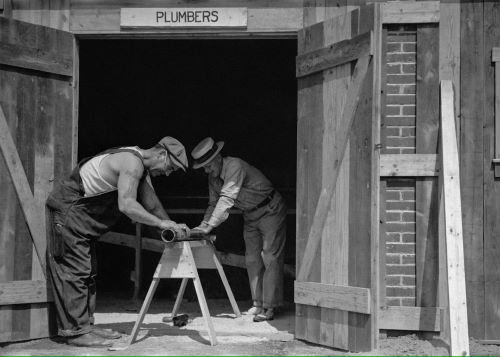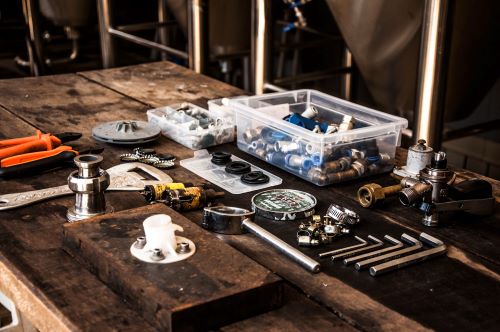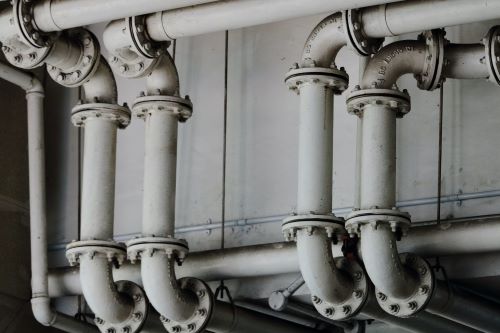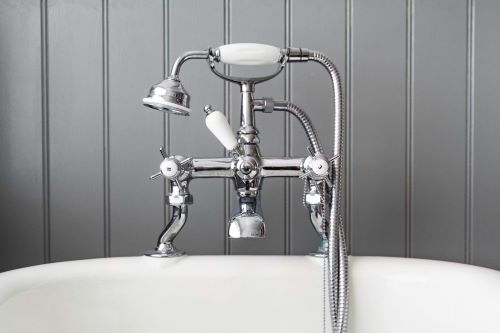Exploring the world of plumbing goes beyond fixing leaks or clearing drains. It’s a journey that requires a strong grasp of safety rules and a dedication to creating a safe work environment.
This guide covers the ins and outs of plumbing safety, highlighting the importance of prioritising personal well-being at every step of the plumbing process. From wearing protective gear to following safe procedures, this guide is a valuable resource for anyone navigating the complexities of plumbing in plumber.
Safety Tips for Plumbers

· The Power of Protective Gear: Your protective gear is like a superhero suit. Gloves, safety glasses, and sturdy footwear are your allies in plumber. Learn how each piece protects you from potential hazards.
· Breathing Easy with Ventilation: Good airflow is essential for a healthy workspace. Discover tricks to keep harmful fumes away, creating a safe and comfortable environment in plumber.
·
Lifting Right, Saving Backs: Proper lifting techniques are more than just using muscles. Find out how to keep your back in good shape by using tools to lift smarter in plumber.
· Electricity Without Shock: Learn about turning off power, understanding risks, and following rules to handle electricity safely in Plumbing.
Essential Safety Tools for Plumbing

Safety is paramount in plumber, starting with the right tools.
· Eye Protection: Safety glasses and face shields are your first line of defense. Learn how they protect your eyes, ensuring clear vision in plumber’s plumbing challenges.
· Glove Choices: Gloves are more than just for show—they’re personalised defenses. Explore the world of gloves and understand their unique purposes for plumber tasks.
· Ear Protection: To block out noise in plumbing pipes, safeguard your hearing with earmuffs or earplugs.
· Respirators for Airborne Risks: Delve into respirators, crucial for protecting against airborne risks in plumber.
· First Aid Kit Essentials: The first aid kit is essential in plumber—explore its basics for immediate care on the plumbing frontlines.
Possible Hazards to Plumbing
Plumbing in plumber recognises possible dangers—let’s take a closer look.
· Handling chemicals safely: Sometimes, in plumbing, you might need to use chemicals. This could be for cleaning or fixing things. Learn how to use these chemicals safely. This means wearing the right gear and knowing what to do if something goes wrong.
Staying Safe on Ladders and Floors: Plumbing work often involves climbing ladders or working on different surfaces. Make sure you use ladders correctly, keep them steady, and keep your work area tidy to avoid slipping or falling.
Being Safe with Hot Water: When dealing with hot water in plumbing, you need to be careful. Learn how to protect yourself from burns and scalds. This includes using the right gear and being aware of the risks.
· Understanding Electrical Safety: In plumbing, you might work with electricity. Know how to stay safe. This means turning off power when needed, using safe tools, and following rules to avoid getting shocked.
Safe Operating Procedures for Plumbing :

Safety is non-negotiable—here are the essentials.
· Instructional Adherence: Always read and follow instructions in plumber. Instructions provide crucial guidance for safely completing plumbing tasks. They ensure you know how to use equipment, follow procedures, and handle potential risks.
· Proper Tool Usage Guidelines:Learn how to use tools correctly to prevent accidents in plumber.
Using tools the right way is like driving a car with proper control. It helps you avoid accidents and injuries. This includes understanding which tools to use for specific tasks and how to handle them safely.
· Workspace Organisation Tips: Keep your workspace neat for safety and efficiency in plumber. Think of your workspace like a clean kitchen; it prevents accidents and helps you work faster. When tools and materials have their own place, you spend less time searching and more time doing the job safely.
· Tool Maintenance Protocols: Regularly take care of your tools for better performance in plumber.
Imagine if your phone always had a low battery—it wouldn’t work well. Similarly, tools need regular care to function properly. Regular cleaning, oiling, and checking for damage ensure they’re always ready for safe use.
How to Safely Dispose of Plumbing Materials in plumber:
· Proper disposal methods:Learn responsible ways to get rid of pipes, fittings, and fixtures in plumber.
Disposing of materials properly ensures they don’t harm the environment or violate regulations. It’s like recycling for plumbing items.
· Environmental Considerations and Regulations: Understand the impact on nature and follow plumber’s rules.
Respecting the environment and local rules is crucial for responsible waste disposal.
· Local Resources for Responsible Disposal:Know about plumber’s facilities for waste disposal. Accessing local disposal resources makes it easy to dispose of materials in an environmentally friendly way.
Common Risks in Plumbing and How to Avoid Them in plumber:
· Identifying Potential Hazards: Talk about common risks and why it’s important to think about them in plumber.
Knowing the risks helps prevent accidents and keeps you safe on the job.
· Preventive Measures: Outline practical steps, like using protective gear and getting proper training.
Taking precautions, like wearing a helmet on a bike, helps prevent accidents in plumbing.
· Safety Gear and Equipment: Detail the specific safety gear needed for different plumbing tasks.
Just like a chef needs the right gear to cook safely, plumbers need specific tools for different jobs.
Safe Practices for Working with Different Types of Plumbing Pipes :

· Guidelines for Handling Various Pipe Materials: Provide rules for safely working with different pipes like PVC, copper, and PEX.Each type of pipe needs special care to avoid problems. It’s like handling different ingredients in a recipe.
· Best Practices for Cutting, Joining, and Installing Pipes:
Explain how to cut, join, and install pipes safely in plumber.
Following the right steps ensures the pipes work well and don’t cause issues.
· Understanding the Characteristics of Each Pipe Type:
Teach about the unique features of different pipes.
Knowing the differences helps you use the right pipe for each job, like using the right tool for a task.
Emergency Protocols for Unexpected Situations in Plumbing Projects in Emergency Protocols :
· Immediate Actions in a Plumbing Emergency:
Outline steps to take during a plumbing emergency, like turning off the water and calling for help.
Quick action in emergencies prevents further damage and keeps everyone safe.
· Creating an Emergency Kit:
Encourage readers to make a kit for plumbing emergencies.
Having a kit is like having a first aid box—it helps you handle unexpected situations.
· Contact Information for Local Emergency Services:
Make sure readers have phone numbers for local emergency services in plumber.
Knowing who to call in an emergency ensures you get help quickly.
Conclusion :
Plumbing in plumber is a complex field that requires a strong focus on safety. Following these clear safety guidelines helps plumbers tackle challenges with confidence. Keep safe, stay informed, and let your plumbing journey showcase your expertise and dedication.
